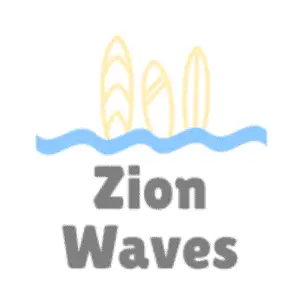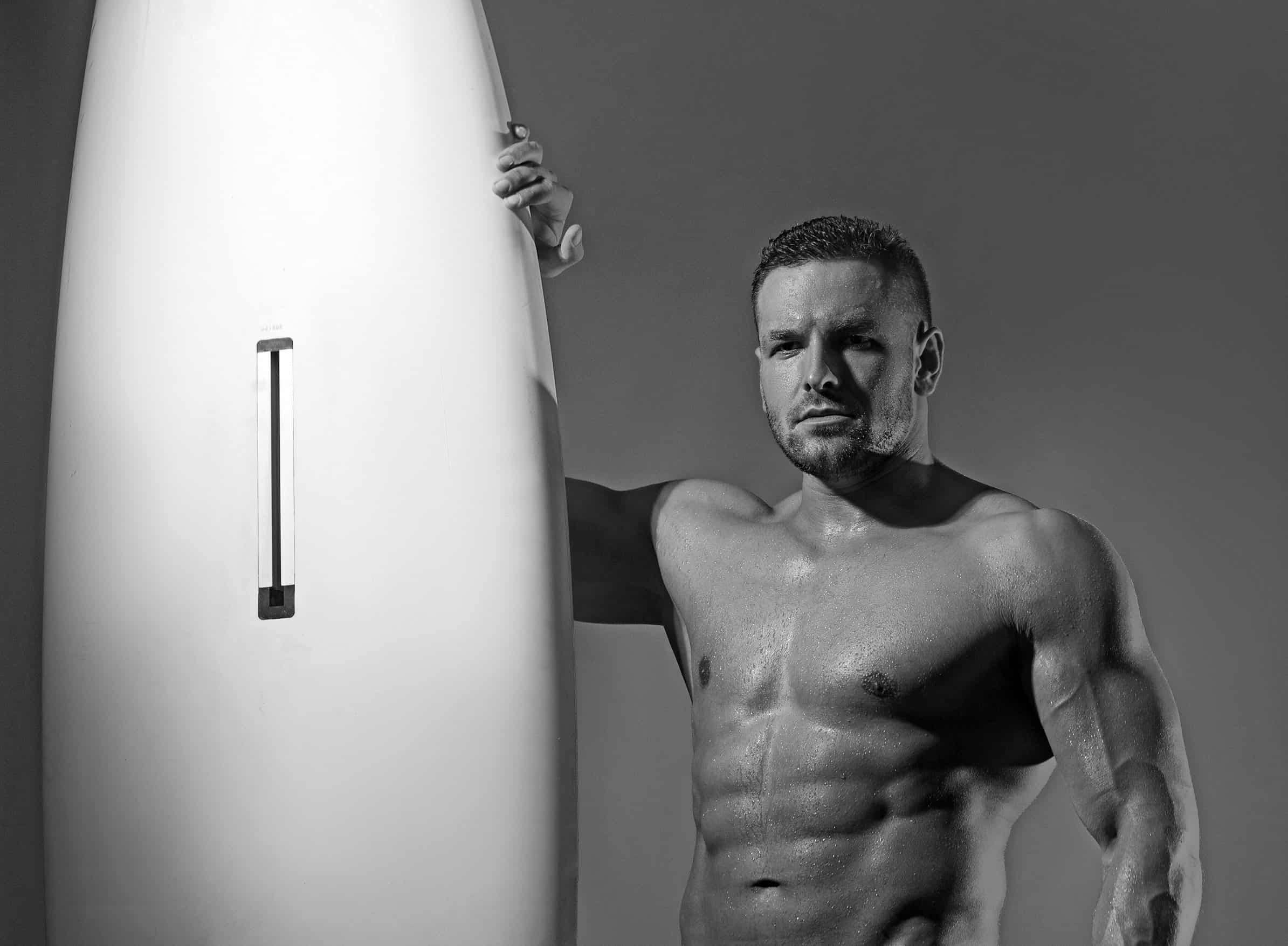Surfing is a full-body exercise that activates your trapezius, core, arms, and legs. These different muscle groups unite to make you stay on top of your surfboard. If you’re a surfer looking to improve your performance or just want to look like one, you’re at the right place.
Surfers do various full-body workouts that engage multiple muscle groups simultaneously, such as pull-ups, planks, squats, push-ups, and lunges. These exercises are effective at building overall strength. Surfers also build endurance by doing traditional activities like swimming and running.
It’s never too late to get a beach body that many surfers have. This article will go over the best workouts that can help you when you’re on a board in the ocean.
Pull-Ups and Chin-Ups
Your upper body does all the balancing on your surfboard. You can build the bulk of your upper body strength with nothing but pull-ups and chin-ups.
Pull-ups and chin-ups are very similar, but they’re not the same. Your palms face away from you for pull-ups, and for chin-ups, your hand is directed towards you.
That said, both exercises teach your body to move in one fluid motion by activating multiple muscles simultaneously. They are also tremendous exercises for your core. Your abs, glutes, and lats all work together to stabilize you by keeping your spine straight.
The main difference between pull-ups and chin-ups is the difficulty. Chin-ups are much easier because they invite your biceps to assist with the pulling action, and bicep strength is important for faster paddling on the surfboard.
On the other hand, push-ups work your trapezius and shoulders more. These two muscle groups are vital for coordination, balance, and preventing neck injuries.
You can start off by doing chin-ups and gradually build up enough strength for pull-ups.
Here’s how to do a basic chin-up:
- Grab the bar shoulder-width apart with your palms towards you.
- Engage your lats, biceps, and core to pull up with all your strength until your head is above the bar.
- Squeeze the bar and hold on for a couple of seconds.
- Lower yourself slowly and repeat until failure.
It’s okay if you can’t do chin-ups from the get-go. It’s a challenging exercise and may not be possible for complete newbies. Instead, you can start by doing negatives – you should jump, grab the bar, and make a controlled descent.
Planks
One of the best full-body endurance and strength-building exercises for surfers is the plank.
Planks activate all the muscles used for surfing and fortify your abs, glutes, and lower back. These are your core muscles, which are fundamental for keeping your body straight on your surfboard. They also activate your lats, traps, biceps, triceps, pecs, quads, and hamstrings.
Here are the steps on how to do this essential surfer exercise:
- Place your elbows on the floor, right below your shoulders.
- Extend your heels so that all your lower body weight is on the balls of your feet.
- Keep your back and knees straight and tightly squeeze your abs and glutes.
- Hold the position for 20-30 seconds.
When your planks go above the 1-minute mark, you’ll have to introduce variations to make them more challenging. Some options include adding a weight plate on your back, planting your feet on a bench, or doing mountain climbers.
Squats
Bodyweight squats are the best beginner-friendly exercise for your legs and core muscles. They strengthen your quads, hams, calves, glutes, abs, and lower back.
Since you’re basically squatting and half-squatting throughout a surfing session, it’s easy to see the benefits of squats.
Additionally, squats improve your ankle, knee, and hip flexibility. Mobility is important for better surfing performance, injury prevention, and cool surfing tricks.
Here is how you should do a basic squat:
- Plant your feet slightly wider than shoulder-width apart.
- Keeping your back straight and torso and chin up, lower your body as if you want to sit down.
- Go down as deep as you can for maximum mobility and strength gains.
- Stand back up.
Just 3 or 4 sets of 10 squats a day can transform you into a better surfer in a matter of weeks.
Bulgarian Split Squat
The Bulgarian split squat is a step up from the traditional squat. It’s essentially an assisted one-leg squat that substantially improves your ankle and hip mobility.
Here are the steps on how to do a Bulgarian split squat:
- Put one foot on a bench, bed, or table and the other on the floor directly below you.
- Keep your spine erect and your head up.
- Lower your body until your knee is close to the floor.
- Push back up.
- Repeat until failure, then do the same for the other leg.
Pistol Squat
If you’re already super strong, try the pistol squat. That said, keep in mind that it’s probably the hardest bodyweight leg exercise, so you may not be able to manage this exercise on your first try.
Instead, you should start by doing a few similar exercises to build up enough strength.
This YouTube video by Squat University shows you how to do a pistol squat correctly along with a couple of gateway exercises:
Lunges
Lunges are similar to Bulgarian split squats in terms of muscle activation.
If you don’t have enough ankle and hip mobility yet, you should start with simple lunges. They’ll strengthen your leg muscles and core to develop your surfboard control.
Here are the steps on how to do a lunge:
- Place one foot in front of you and the other behind you.
- Bend your knee 90 degrees or until your other knee nearly touches the floor. If the other knee does touch the floor, extend your legs further.
- Keep your body straight throughout the entire motion.
- Push with your lunging leg to stand back up.
- Repeat until failure, then switch legs.
This exercise is great for your hip flexor muscles. If you want more hip mobility, consider trying a variation of the lunge, like the side lunge.
Side lunges are great at training the muscles you use to change direction on the surfboard. You do side lunges the same way as traditional lunges, but you lunge to the side.
Swimming
As the air to a bird, so is swimming to a surfer. You’re already near the ocean, so swimming is probably an everyday activity for you.
If you don’t swim regularly, you should. Swimming is a low-impact endurance full-body exercise. You can swim for hours without risking joint pain. Plus, the salty ocean water will do wonders for your skin!
More than this, you must know how to swim just in case you fall off the surfboard. Being a skilled swimmer is essential to staying safe in the ocean, especially if you’re surfing alone, and significantly reduces the risk of drowning.
Running
Jogging, running, and sprinting are some of the best compound exercises available. Take in the beautiful scenery by running on the beach or coastline. All you need is a pair of running shoes, and you’re good to go.
In addition to working your legs, running is great for your core too. Your core works hard to keep your body stable when running. These gains transfer to surfing beautifully.
When running, you should alternate between traditional cardiovascular running and HIIT.
Push-Ups
Push-ups are the perfect exercise for your shoulders, triceps, and pecs. Additionally, they also engage your core and leg muscles.
You need strong shoulders to paddle quickly and reach the next big wave. More than that, you also need to use your arms for balance.
Here are the steps on how to do a regular push-up:
- Place your hands slightly wider than shoulder-width on the floor.
- Fully extend your body and press down with your feet.
- Keep your elbows at a slight angle and your head and back in a neutral position by engaging the abs and glutes.
- Push up using all upper body strength.
You can do push-ups on your knees if you don’t have the strength for classic push-ups yet. On the other hand, if traditional push-ups are too easy, consider trying variations like the Aztec push-up, one-leg push-up, and clap push-up.
Final Thoughts
Surfing is a fun sport that activates all muscles in your body. So, you must work on full-body strength to become a great surfer.
Doing full-body exercises like pull-ups, squats, and planks will teach your muscles how to work together to keep you stable the next time you run out to catch the next perfect wave.

